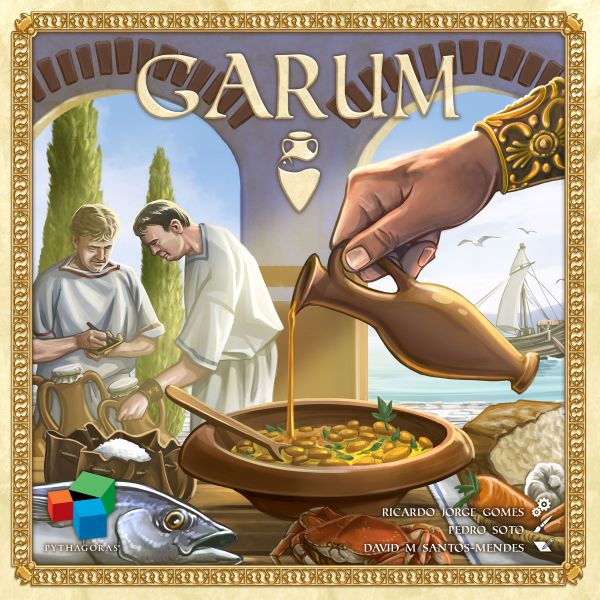Garum (2019) Board Game
Garum is an abstract strategy board game that was released in in 2019. Designed by Pedro Soto and illustrated by PYTHAGORAS, the game is set in ancient times and focuses on the production of the prized Roman condiment, garum. Players take on the roles of ancient Roman entrepreneurs seeking to dominate the market by producing and selling the best garum.
Game Components of Garum
How To Setup Garum
To set up Garum, each player receives a set of 16 Cetarian Tiles. The board is laid out as a 4×4 grid, representing the cetarium. The 16 coins are shuffled and placed face down. Each player draws a hand of four tiles from their supply. In a two-player game, each player controls two colors, alternating turns. In a three-player game, the first player places a neutral color at the end of each round.
Gameplay Mechanics and Game Objective
Player Experience
Garum is a light, family-friendly game that can be taught and played within a 30-minute window. The game is language-independent and offers endless replayability due to its dynamic board system. Players must balance long-term planning with immediate tile placement decisions, as the order of draw and turn order can significantly impact the game. The game encourages strategic thinking but also relies on a fair bit of luck, particularly in the draw of tiles and coins.
Pros
Cons
Personal Thoughts on Garum
Garum is ideal for those looking for a light, strategic game that is easy to learn but still offers some depth. It’s perfect for families or casual gamers who want a game that doesn’t overwhelm but still challenges. However, players seeking a game with more complex mechanics or those who dislike luck-based elements might find Garum too simplistic. The game’s unique theme and beautiful visuals make it a great addition to any board game collection, especially for those interested in ancient Rome or tile-laying games.
We are supported by our audience. When you purchase through links on our site, we may earn an affiliate commission, at no extra cost for you. Learn more.

